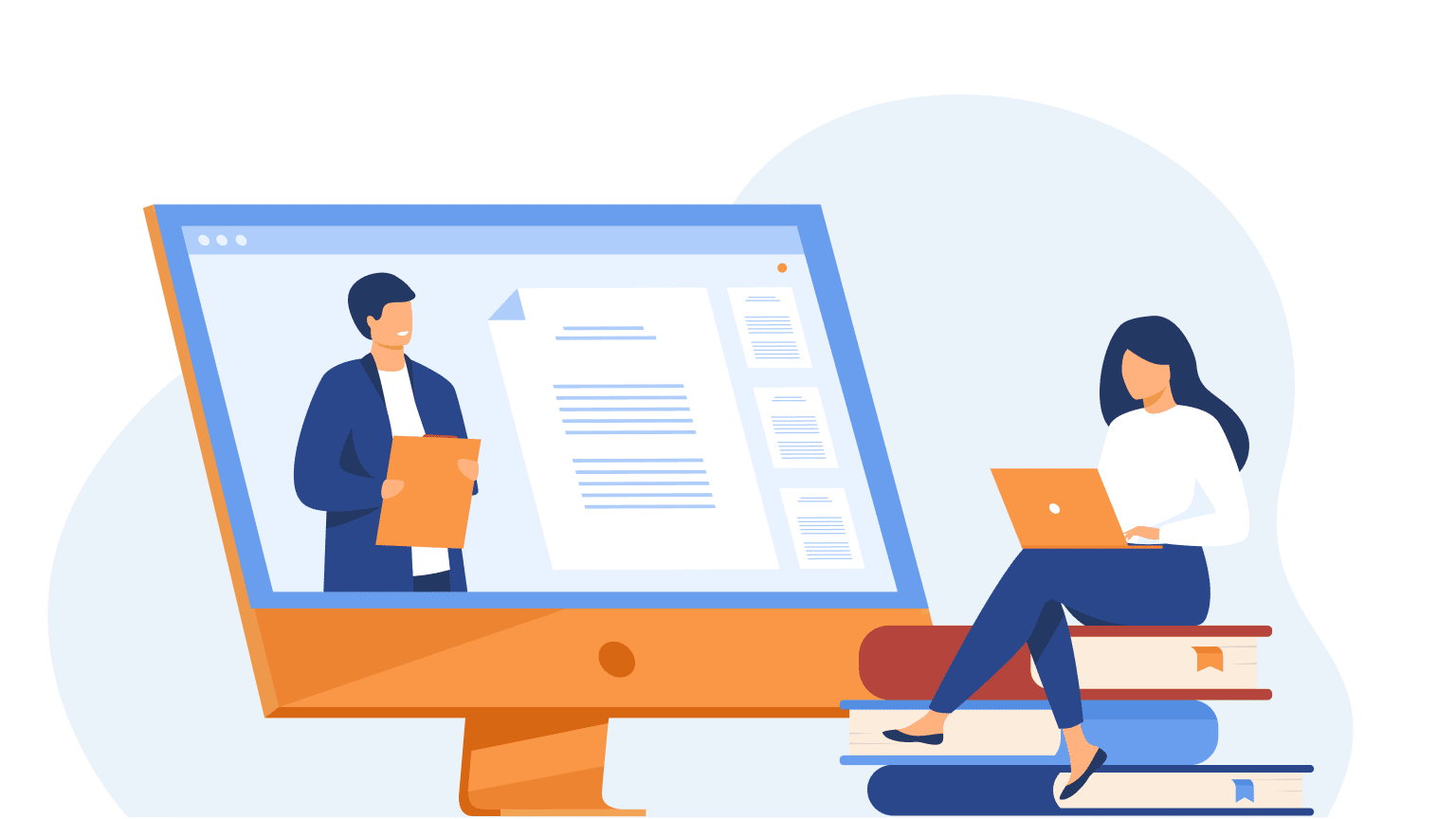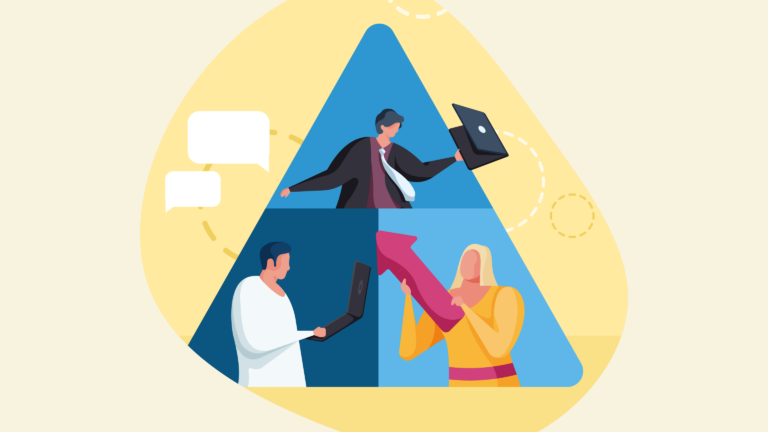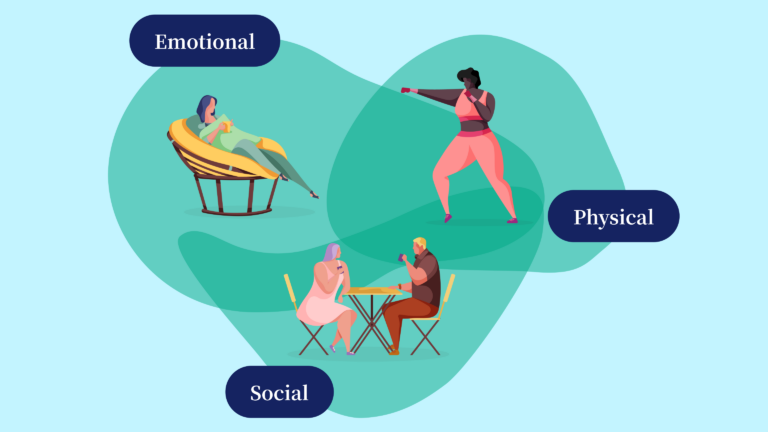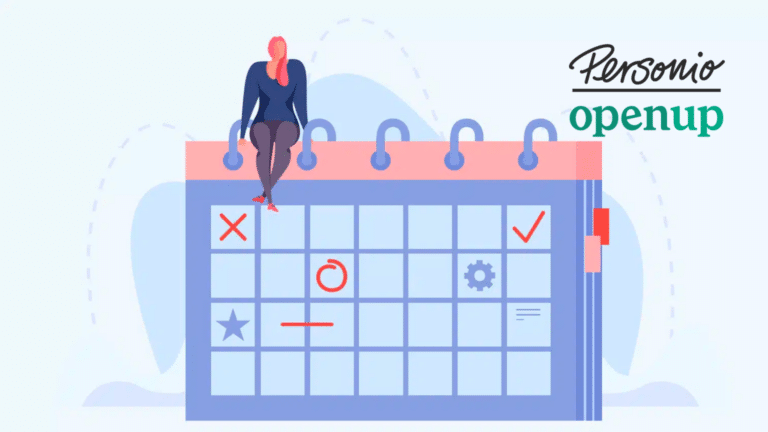Got a meeting? There’s an app for that. Managing tasks within a team? There’s an app for that. Communicating with your colleagues? There’s an app for that. Want to know if it’s raining outside? There’s an app for that. We’re living in a digital age. Technology permeates all aspects of our lives. That includes our working lives. On the one hand, this is more efficient, but on the other hand it brings about a range of challenges.
Digitalization in the workplace has a huge impact on how you carry out your daily tasks. In this article, we’re going to discuss the four major challenges you’ll encounter and how to navigate them.
Challenge 1: Hybrid working makes it harder to keep your finger on the pulse
If somebody isn’t feeling great in terms of their mental health, you’ll often see physical signs. These could be pale skin, bags under the eyes, an inability to smile, daydreaming, red eyes, etc. Symptoms like these are easier to conceal if you’re not physically in the office. And this means that it’s harder for other people to spot them.
As an HR professional or manager, you’ll want to be involved in the health of your employees. Digitalization makes this more difficult. Fortunately, there are a number of different ways to keep your finger on the pulse:
- Introduce monthly check-ins for employees and managers with the explicit goal of allowing people to talk about stress, work pressure, work-life balance and mental health. You can lead these conversations yourself or allow managers and supervisors to do them with their teams.
- Decide who would be the right people for this, whether it’s you, your colleagues in HR, managers or team leaders. The best choice will vary depending on the organization.
- Offer training sessions to team leaders and managers on how to lead conversations like this, but also on how to recognize when somebody in the workplace is struggling with their mental health. Even through a screen.
- Carry out anonymous(!) surveys amongst the staff to assess the general state of mental health within your organization.
- Turn to OpenUp for external support. We’re always there to provide mental health assistance to anybody within your organization. It’s often easier to talk about your mental health with an external professional, rather than somebody from HR or a manager.
Everyone struggles with mental health challenges sometimes. OpenUp can tell the difference between a mental health dip and burnout. Consultations with psychologists help employees to resolve their queries and challenges before they have to call in sick.
Challenge 2: Screen fatigue is on the rise
We’re now spending more time in front of a screen than ever before. We keep getting online notifications, scrum boards and task lists have been relocated to the digital sphere, and we communicate through Slack, emails and video calls.
This can increase efficiency, but it also leads to certain inevitable challenges: Screen fatigue is a growing health concern.
In our article “The Future of Work-Life Balance“ we previously gave you five tips for coping with this. Here’s a roundup of those five tips:
- Encourage employees to start off their working day by writing in a notebook instead of staring at a screen. Fun tip: Hand out personalized notebooks or agendas as gifts to promote this.
- Encourage employees to take plenty of breaks. Read our article about this here.
- Discourage employees from taking their phones to in-person meetings.
- Discourage them from taking laptops to meetings.
- Choose your digital tools wisely. Are they really necessary?
It also helps to purchase all of your tools through a single service provider (e.g., Microsoft, Google or Notion). This way you’ll streamline your tools and save time (and hassle) by not needing to keep finding and logging into different platforms.
Challenge 3: Engagement and motivation are becoming more difficult
Engagement and motivation were already a challenge before the pandemic, when we started to work more in the digital sphere, and that’s now even more true. Keeping employees engaged and motivated in the digital world requires all the same techniques you would need in the analogue world.
Here’s what you can do:
- Reward success, both for individuals and teams. This could be using physical or digital methods, such as posters at work or screensavers on laptops. Or celebrate them over drinks, during lunch or with gifts.
- Acknowledge important moments in the lives of your employees
- Provide plenty of time for recreational activities and informal contact
- Develop a company mission statement that employees can relate to
- Encourage employees to take plenty of breaks
- Offer employees plenty of flexibility in terms of where they work
- Be generous with your employee benefits
Further reading: The 4 Basic Principles of Employee Motivation
Challenge 4: Talent is more mobile, making local resources harder to find
Many companies are currently going through a “changing of the guard”: The generation known as baby boomers is slowly leaving the job market while younger people are pouring into organizations. This group of people is less tied to a specific location than the group that preceded it.
As our economy becomes more global and talent is increasingly mobile, it becomes more difficult to find local talent. “Local” definitely isn’t always the holy grail, but sometimes physical presence is important in terms of engagement, collaboration, team building, creativity and innovation.
Unfortunately, there isn’t a straightforward solution for this. The best approach? Accept that remote working is a desirable method of employment for a growing number of people. It’s better to create the optimum conditions for being as successful as possible within a hybrid team than to swim against the current.
To learn more, read: A Model for the Future: How to Get Hybrid Working Right
Change always presents a new set of challenges. Using the tools above, you can look out for the mental health of your employees in these digital times.
Oh, and preventing your employees from developing mental health problems? There’s a platform for that. Because you can always reach our psychologists through video consultations and online chat.





